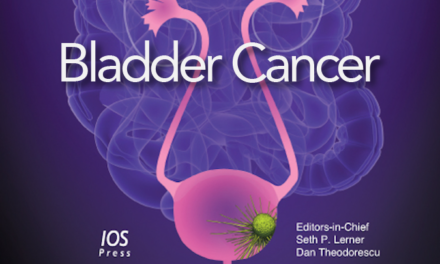Daniel A. Hamstra, MD, PhD, presented “Bladder-Sparing Trimodality Therapy” during the 25th Innovations in Urologic Practice conference on September 24, 2021, in Santa Fe, New Mexico.
How to cite: Hamstra, Daniel A. “Bladder-Sparing Trimodality Therapy.” September 24th, 2021. Accessed Jul 2025. https://grandroundsinurology.com/bladder-sparing-trimodality-therapy/
Bladder-Sparing Trimodality Therapy – Summary
Daniel A. Hamstra, MD, PhD, Chairman and Professor of Radiation Oncology at Baylor College of Medicine in Houston, Texas, discusses bladder-sparing trimodality therapy for patients with bladder cancer, explaining the role of each aspect of care, outcomes in terms of quality of life, and the potential future role of checkpoint inhibitors. He begins by noting that successful organ preservation approaches in oncology are common (e.g., in breast cancer, head and neck cancer, and extremity sarcoma) and can reasonably be applied to bladder cancer as well. Dr. Hamstra then introduces the standard care pathway for trimodality bladder preservation, from transurethral resection of bladder tumor (TURBT), to neoadjuvant chemotherapy, to radiotherapy with radiosensitizing agent, to follow-up with repeat cystoscopy. He goes into detail about the role of each portion of treatment, arguing that surgical management, concurrent chemotherapy, and radiation therapy are all critical to treatment success. Dr. Hamstra also discusses how radiation should be delivered in terms of effectiveness and toxicity and considers the question of whether to treat the bladder only or the pelvis and bladder with radiation. He then looks at patient-reported quality of life after bladder preservation, highlighting that while many patients report declines in bladder-related quality of life immediately following chemoradiotherapy, they generally improve to baseline after 6 months, and ⅔ of patients report stable or improved quality of life on long-term follow-up. Finally, Dr. Hamstra touches on future additions to bladder-sparing treatment such as checkpoint inhibitors, highlighting the ongoing INTACT trial of concurrent chemoradiation with or without atezolizumab for localized muscle invasive bladder cancer. He concludes that trimodality bladder preservation represents a viable but underutilized option for T2-T4 bladder cancer that requires coordinated care between urology, medical oncology, and radiation oncology. Dr. Hamstra reiterates that each component of treatment is critical, quality of life outcomes are excellent, and newer agents may also improve outcomes.
About The 25th Annual Innovations in Urologic Practice:
Presented by co-chairs Mohit Khera, MD, MBA, MPH, and Michael Coburn, MD, FACS, the Innovations in Urologic Practice conference provides a detailed review and commentary on multiple genitourinary and urologic diseases. Among the featured oncological topics are bladder cancer and immunotherapies, as well as upper tract cancer management, prostate cancer, including state-of-the-art imaging, focal therapy, and MRI. Experts also discuss new tools and techniques for nephrectomy and treating advanced renal cell carcinoma. In terms of general urological approaches, the conference also includes pelvic reconstruction and trauma, men’s health topics like male infertility and sexual dysfunction, and ways to diagnose and treat infections in the urology patient. Dr. Hamstra presented this talk at the 2021 conference.
For further educational activities from this conference, visit our collection page.
ABOUT THE AUTHOR
Daniel A. Hamstra, MD, PhD, FASTRO, FASCO, is Professor and Chair of Radiation Oncology at Baylor College of Medicine in Houston, Texas. Dr. Hamstra specializes in prostate cancer and tumors of the brain and spine with a particular focus on understanding patients’ experience both during and after treatment. His work has made a substantial impact on the growing understanding and appreciation of patient reported quality of life after radiation therapy. He has led local and national clinical trials of radiation therapy in prostate cancer and is an active member of several medical professional societies including the American Society of Clinical Oncology, the American Society of Therapeutic Radiation Oncology, and SWOG.





